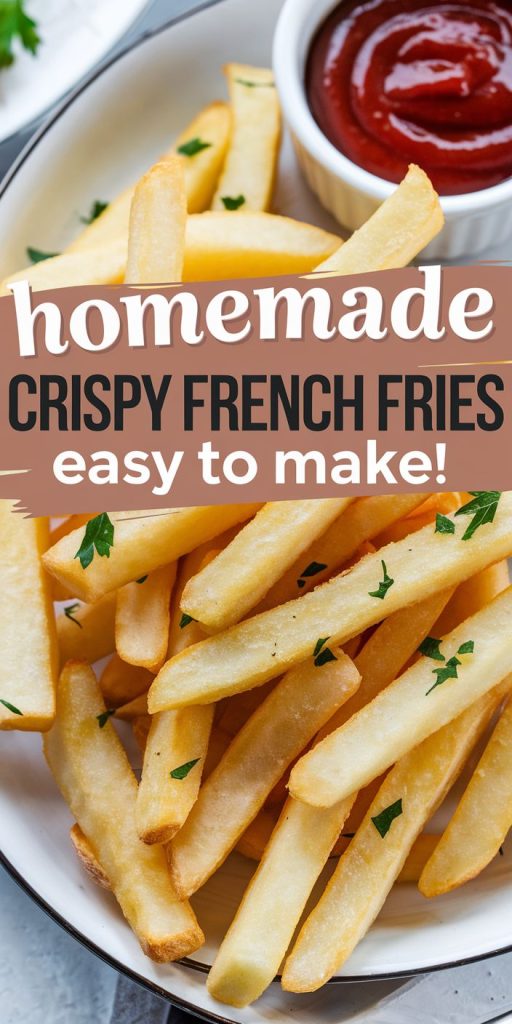
There’s something magical about biting into freshly made French fries. I remember my first try at making them at home. I had a bag of russet potatoes and a deep-fryer. I wanted to make the crispy fries I loved at my favorite diner.
The aroma filled my kitchen as I dropped the potatoes into hot oil. The sound was music to my ears. Soon, I was enjoying crispy fries with a fluffy inside. This made me feel so accomplished.

This article will guide you to making your own homemade fries. They’re loved for their crunch and rich flavor.
Whether you love fries or are new to cooking, I’ll share tips and tricks. You’ll learn how to make perfect fries every time. Get ready to enjoy crispy fries at home, just like your favorite diner!

Key Takeaways
- Discover the rich history behind beloved French fries
- Learn how to select the best potatoes for crispy fries
- Understand the importance of soaking for extra crunch
- Explore various frying methods, including air-frying
- Get creative with gourmet seasoning options for your fries
- Find practical tips for storing and reheating leftover fries
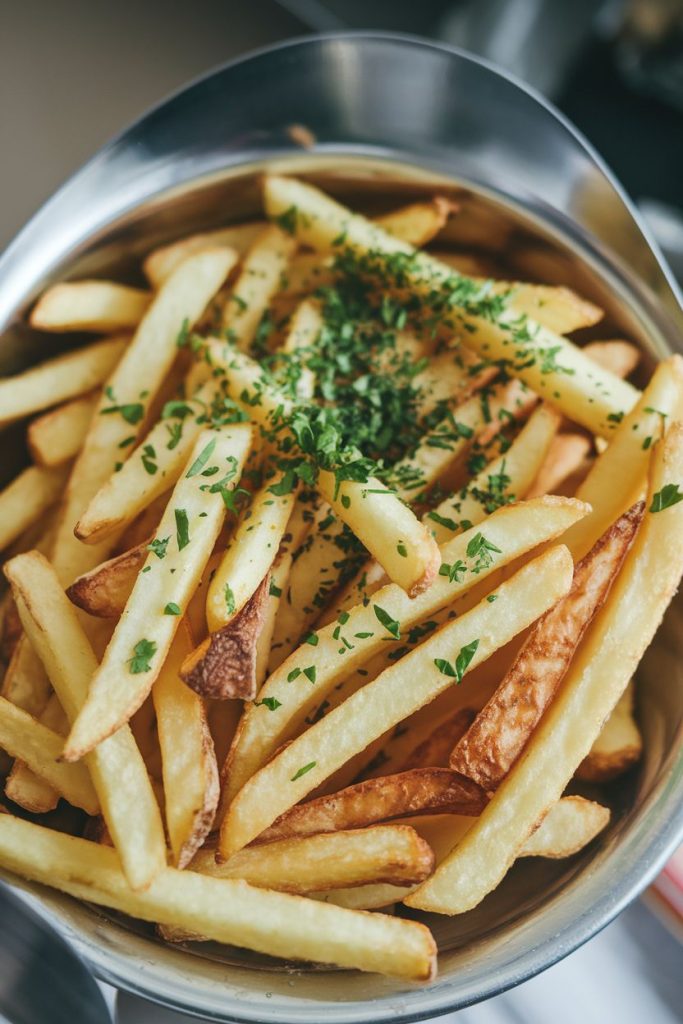


Introduction to French Fries
French fries are a favorite in fast food. They’re loved for their crunchy texture and versatility. Delicious fries make any meal special, from casual to gourmet.
The History of French Fries
The story of French fries starts in the 18th century. They were first enjoyed in Belgium and France, paired with fish. Their unique taste and texture quickly made them popular across Europe.
Fast food fries soon became a hit street food. Today, they’re a key part of menus everywhere.
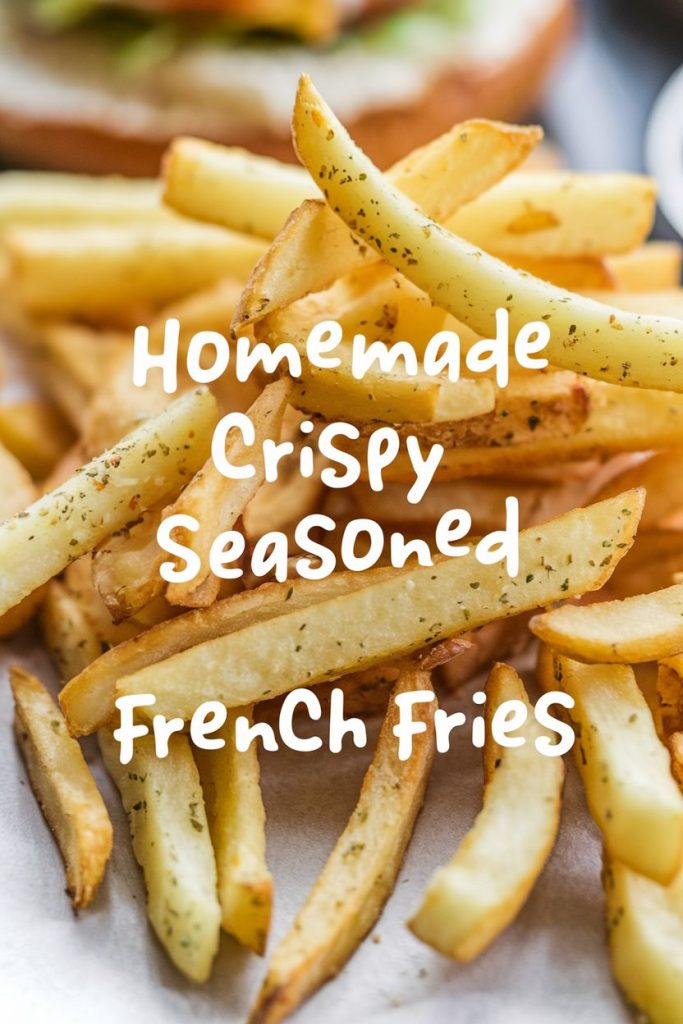
Why We Love French Fries
There are many reasons to love French fries. They’re perfect for adding toppings or enjoying with ketchup. The crunch they offer is a joy to eat.
Fast food fries give us quick comfort. Homemade fries let us customize to our liking. The love for French fries is shared by all.

Choosing the Right Potatoes
When making perfect potato fries, picking the right potatoes is key. Different types of potatoes for frying can change how your fries turn out. You want a crispy outside and a fluffy inside.
Types of Potatoes Best for Frying
Many varieties are great for frying, each adding something special to your fries. Here are my top picks for making crispy fries:
- Russet Potatoes: Known for their starch, they make fries both crispy and fluffy.
- Yukon Gold: A bit waxy with a rich flavor, they stay crispy and offer a creamy center.
- Maris Piper: Loved in the UK, they balance creaminess with crispiness in potato fries.
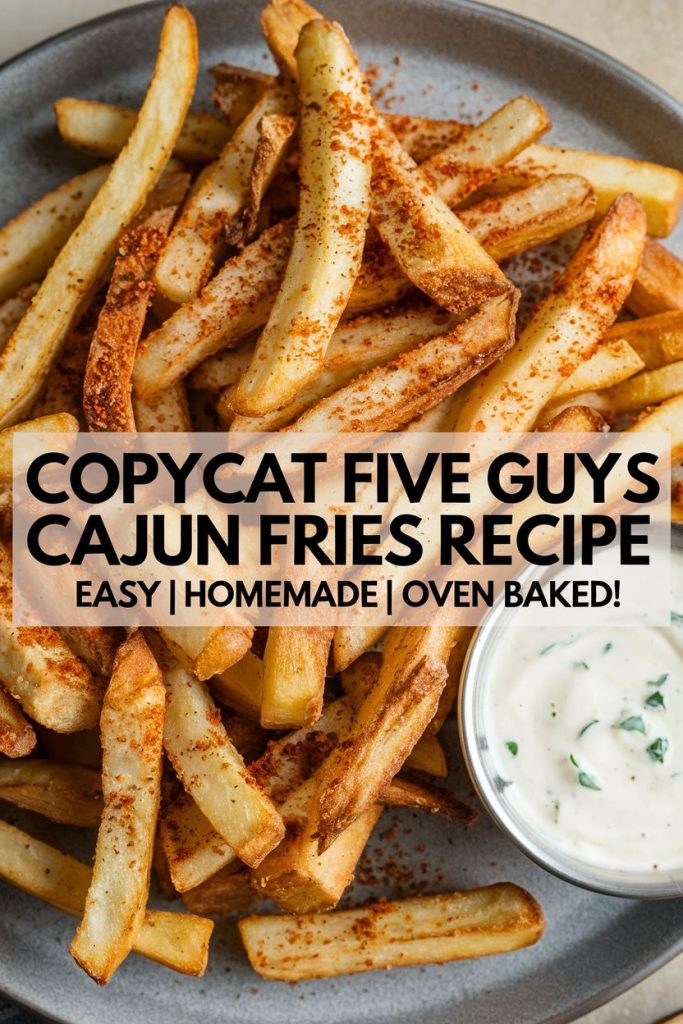
How Potato Starch Affects Crispiness
The starch in potatoes is key for that crunchy bite. High-starch potatoes yield a fluffy inside and a crispy outside when fried. Low-starch potatoes, while good for other dishes, can make fries soft and soggy. Knowing this can really improve your frying skills.
| Type of Potato | Starch Content | Ideal For | Crispiness Level |
|---|---|---|---|
| Russet | High | French Fries | High |
| Yukon Gold | Medium | Homestyle Fries | Medium |
| Maris Piper | High | Chips | High |

Preparation Steps for Perfect Fries
Choosing whether to peel potatoes or leave the skins on is a big decision. Each choice has its own benefits. Leaving the skin on adds flavor and nutrition, while peeling gives a classic look and feel. It’s crucial to use the right cutting techniques for even cooking and consistency.
Peeling vs. Leaving the Skin On
Peeling potatoes makes fries look and feel traditional. But, leaving the skins on boosts flavor and adds fiber. Your choice should match your taste and what you want your fries to be like.
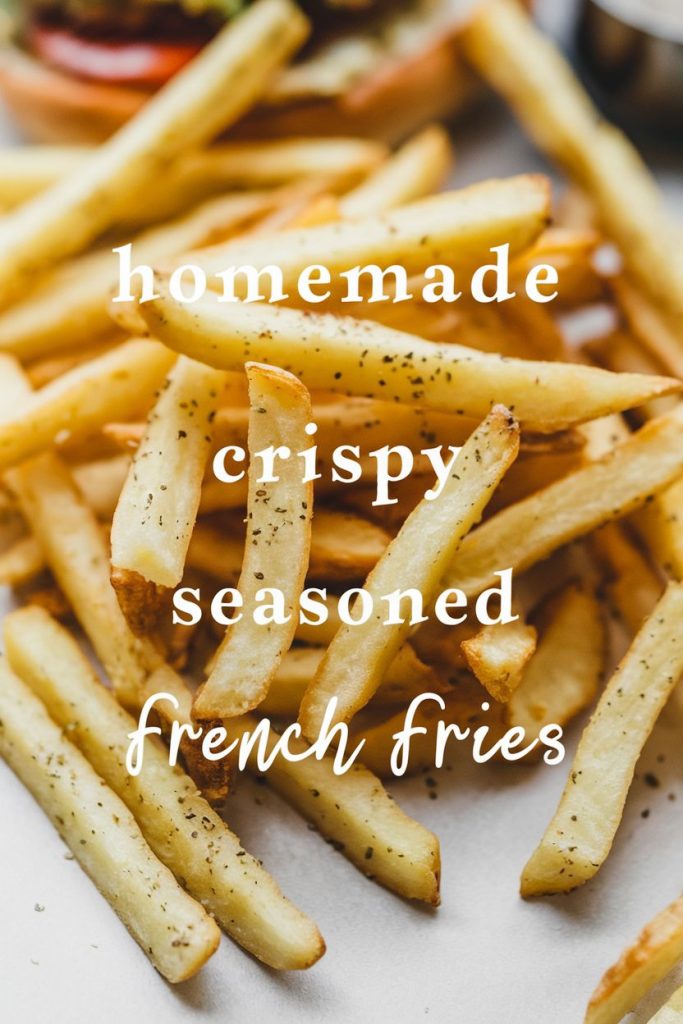
Cutting Techniques for Uniformity
Even cuts are key for cooking fries right, whether they have skins or not. I find that slices about ¼ inch thick work best. They’re crispy on the outside and soft inside. You can also try julienne or wedge cuts for different fry styles. Here’s a look at some common cutting methods:
| Cutting Technique | Description | Texture Produced |
|---|---|---|
| Julienne | Thin, matchstick-like strips | Crunchy exterior, tender inside |
| Wedge | Thick, triangular shapes | Fluffy interior with crispy edges |
| Crinkle Cut | Wavy, zigzag pattern | Textured surface for holding seasonings |

The Importance of Soaking
Soaking cut potatoes is key to making perfect, crispy fries. This step improves texture and ensures each fry reaches its best.
How Soaking Removes Excess Starch
Soaking fries in cold water removes excess starch. This starch can make fries stick together when frying. By soaking the potatoes for at least 30 minutes, they become less gummy and crispier.
As the starch dissolves, it helps fries cook evenly. This makes each piece crunchy.

Soaking Time: Less is More?
Soaking time can vary. While 30 minutes is often enough, longer soaks can make fries even better. Longer soaking times remove more starch and balance moisture, leading to a better texture.
Regardless of soaking time, I always drain and dry the potatoes well before frying. This ensures my fries are perfectly crispy.
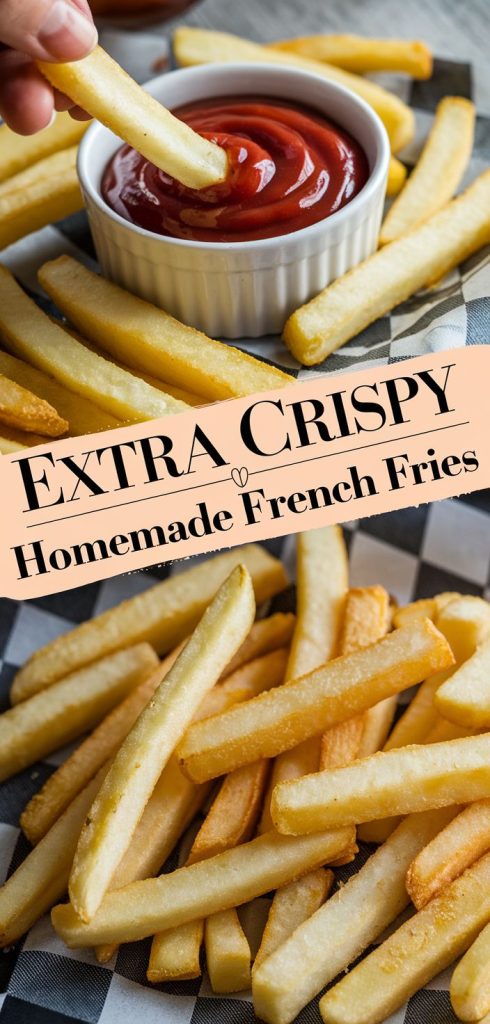
The Frying Process
Understanding the frying process is key to making perfect fries. The type of oil and the frying method greatly affect taste and texture. Let’s look at how choosing the right oil and method can improve your fry-making experience.
Choosing the Right Oil for Frying
Choosing the right oil for frying is vital for tasty fries. Oils like peanut, canola, and vegetable can handle high temperatures without burning. They add flavor and crispiness to deep-fried fries. The right oil helps achieve the perfect texture and taste.

Deep-Frying vs. Air-Frying
Both deep-frying and air-frying have their perks. Deep-frying gives traditional, crispy fries. It ensures even cooking and a crunchy texture. Air-frying, on the other hand, uses less oil, making it healthier. It produces crispy fries with a soft inside, perfect for those watching their fat intake.
| Frying Method | Crispiness | Health Factor | Flavor |
|---|---|---|---|
| Deep-Frying | Excellent | Higher fat content | Rich and savory |
| Air-Frying | Good | Lower fat content | Light and fresh |
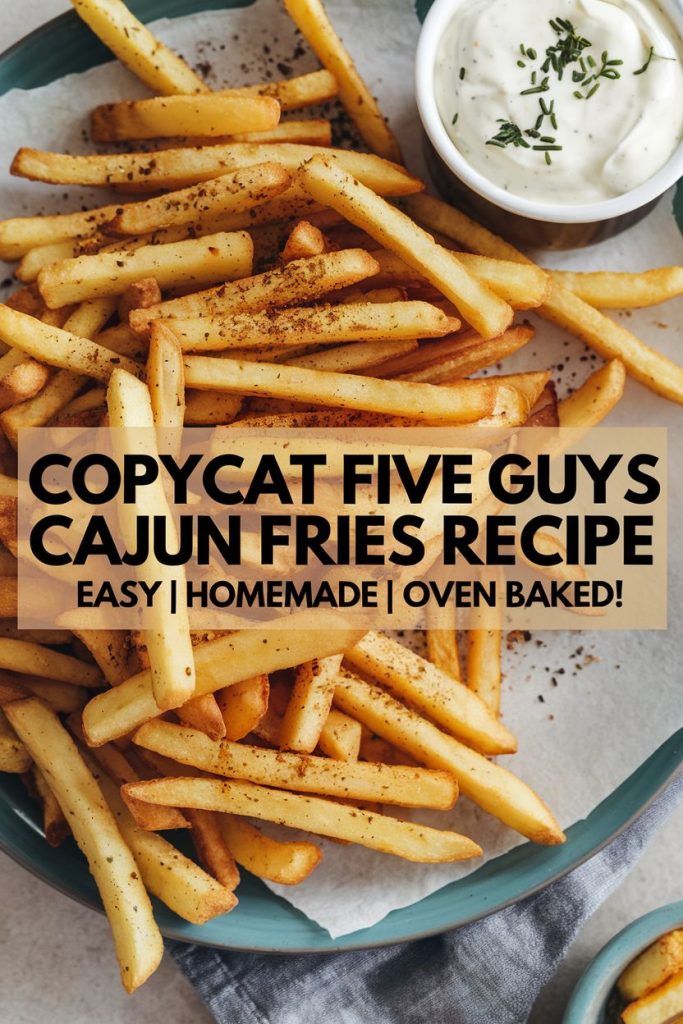
Seasoning Your Fries
Seasoning fries can really make them taste better. The right mix of flavors can turn simple fries into a tasty snack. It’s great with any meal. Classic seasonings and gourmet flavors can both make fries special.
Classic Seasoning Options
Classic seasonings for fries are simple yet effective. I like using:
- Sea salt
- Garlic powder
- Paprika
These seasonings work best when sprinkled on hot fries. They make the fries irresistible.
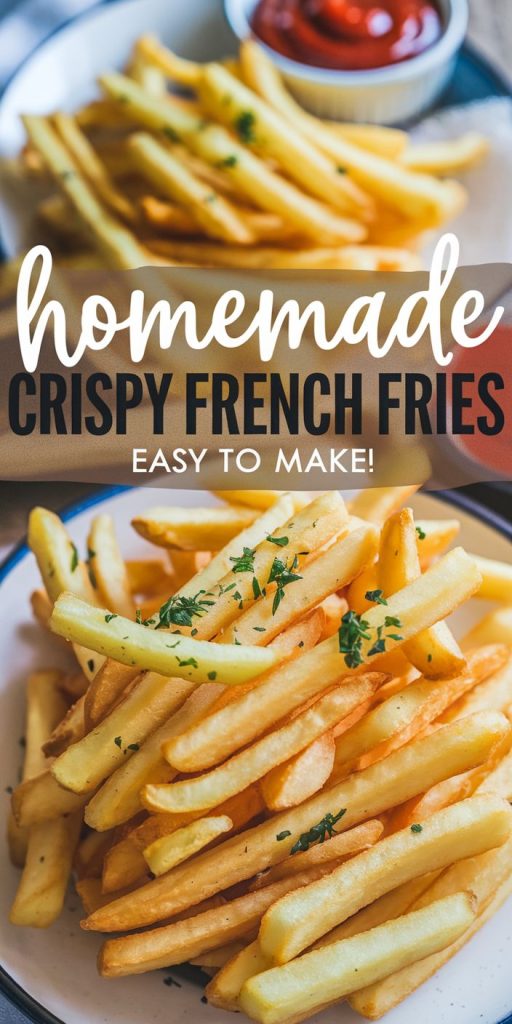
Adding Gourmet Flavors
Gourmet flavors can elevate seasoned fries even more. I try out:
- Truffle oil
- Parmesan cheese
- Smoked sea salt
Each flavor adds something special. It turns seasoned fries into a fancy dish. Customizing the seasoning makes snacks memorable and perfect for any occasion.
| Classic Seasoning | Gourmet Flavor |
|---|---|
| Sea Salt | Truffle Oil |
| Garlic Powder | Parmesan Cheese |
| Paprika | Smoked Sea Salt |
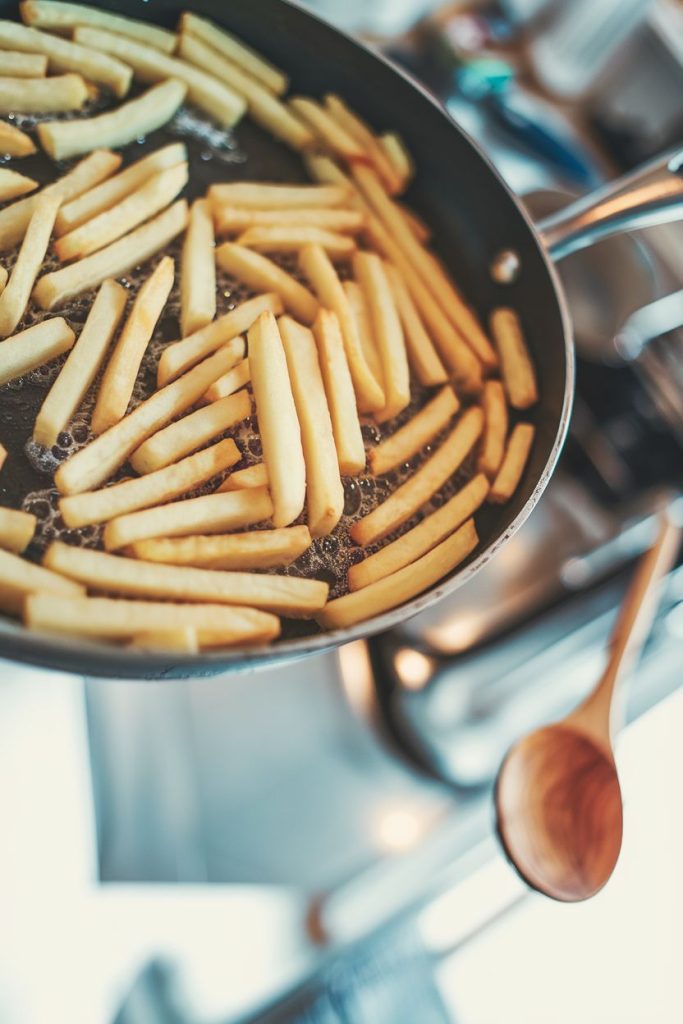
French Fries Recipe
The aroma filled my kitchen as I dropped the potatoes into hot oil. The sound was music to my ears. Soon, I was enjoying crispy fries with a fluffy inside. This made me feel so accomplished.
Ingredient List
- Russet Potatoes (preferred for crispy fries) – 4 large potatoes
- Cold Water (for soaking)
- Peanut, Canola, or Vegetable Oil (for frying) – about 2-3 quarts, depending on your fryer size
- Sea Salt (for seasoning) – to taste
- Optional Seasonings:
- Garlic Powder
- Paprika
- Truffle Oil
- Parmesan Cheese
- Smoked Sea Salt
- Optional Dipping Sauces:
- Ketchup
- Mayonnaise
- Aioli
- Ranch Dressing
- Barbecue Sauce
- Sriracha
Step-by-Step Instructions
1. Prep and Cut the Potatoes
- Wash and optionally peel each potato. Leaving the skin on adds flavor and nutrition, but peeling gives that traditional diner-style look.
- Using a sharp knife or a fry cutter, slice the potatoes into ¼-inch thick sticks (or your preferred shape—wedges, crinkle-cut, etc.). Uniform thickness ensures even cooking.
2. Soak to Remove Excess Starch
- Place the cut potatoes in a large bowl and cover them with cold water.
- Soak for at least 30 minutes to remove excess starch. (You can soak longer—up to a couple of hours—for an even crispier result.)
- After soaking, drain the water and pat the potatoes completely dry with a clean kitchen towel or paper towels. Removing moisture helps the fries crisp up in the fryer.
3. Heat the Oil
- Select an oil with a high smoke point (peanut, canola, vegetable) so it can handle high temperatures without burning.
- Preheat the oil in your deep-fryer or a heavy-bottomed pot to 350°F (175°C). Using a thermometer ensures accurate temperature.
- If you’re air-frying, preheat your air fryer to 375°F (190°C).
4. Fry in Batches (Deep-Frying Method)
- Carefully lower a handful of fries into the hot oil. Avoid overcrowding; too many fries at once will lower the oil temperature, resulting in greasy, soggy fries.
- Fry the potatoes for about 3–4 minutes or until they start turning lightly golden.
- Using a slotted spoon or fryer basket, remove the fries and let them drain on a paper towel-lined tray.
- Increase the oil temperature to 375°F (190°C) if you want to do a second fry (often called the “double-fry method” for extra crispiness). Fry for an additional 2–3 minutes or until they reach your desired golden-brown color.
- Transfer fries to a clean paper towel or a rack to drain excess oil.
Air-Fryer Variation
- Lightly coat your cut, soaked, and dried potatoes with oil (1–2 tablespoons).
- Place fries in a single layer in the air fryer basket, leaving space so air can circulate.
- Cook for 15–20 minutes at 375°F (190°C), shaking the basket or flipping fries halfway through to ensure even browning.
5. Season Immediately
- Right after removing fries from the oil (or air fryer), season them while they’re still hot. This helps salt and spices stick to the surface.
- Sprinkle salt generously. If you want added flavor, use paprika, garlic powder, or pepper. For a gourmet twist, drizzle truffle oil or grate Parmesan cheese over the fries.
6. Serve and Enjoy
- Plate your freshly fried fries.
- Pair them with your favorite dipping sauces: ketchup, mayonnaise, aioli, ranch, barbecue sauce, or spicy sriracha.
- Serve alongside burgers, sandwiches, grilled chicken, or enjoy them solo.
Serving Suggestions
Thinking about serving fries makes me excited about the dipping sauces. The right sauce can turn simple fries into something amazing. Classic choices like ketchup, mayo, and aioli are great. But, trying new flavors like ranch, barbecue, and sriracha adds a fun twist.
Dipping Sauces for French Fries
Choosing the perfect dipping sauce is an art. Here are my favorite sauces for fries:
- Ketchup
- Mayonnaise
- Aioli
- Ranch Dressing
- Barbecue Sauce
- Spicy Sriracha
Pairing Fries with Your Meals
Fries are the perfect sidekick for many meals. They go well with burgers, sandwiches, or grilled chicken. The crispiness of fries adds to the enjoyment of each bite. Here are some popular pairings:
| Main Dish | Suggested Fries Pairing |
|---|---|
| Burgers | Classic French Fries |
| Sandwiches | Sweet Potato Fries |
| Grilled Chicken | Seasoned Waffle Fries |
| Tacos | Crispy Curly Fries |
Serving fries with your favorite dishes can make meals better. Fries are versatile, loved for casual or fancy meals.
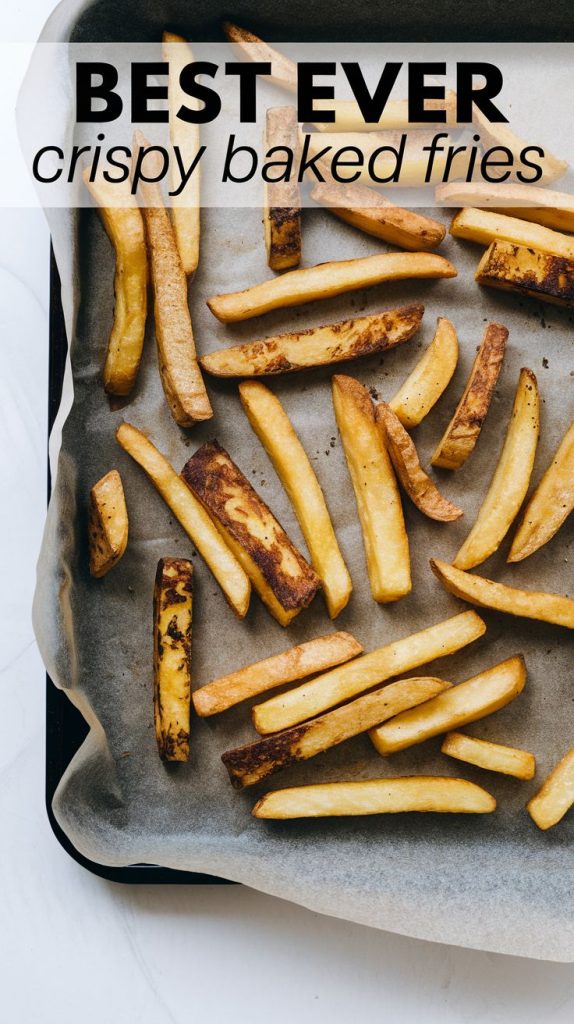
Common Mistakes to Avoid
Making French fries might seem easy, but many mistakes can ruin the dish. Knowing these common errors helps me improve my frying skills. It also makes the fries taste better and crispier.
Overcrowding the Fryer
One big mistake is overcrowding the fryer. Too many fries at once lower the oil temperature. This makes the fries soggy instead of crispy.
To get that perfect crunch, I fry in smaller batches. This keeps the oil temperature just right. A good frying process makes the fries much better.

Not Preheating Oil
Another mistake is not preheating oil. Not warming the oil enough can cause uneven cooking and greasy fries. I aim for a temperature of about 350°F.
By preheating the oil, each fry cooks perfectly. This gives them a golden color and a satisfying crunch.
Storing and Reheating Leftover Fries
Enjoying crispy French fries often leaves me with leftovers. Keeping them fresh is crucial. I store my fries in an airtight container to preserve their taste and texture. Refrigerating them quickly helps them stay good for a few days, so I can enjoy them again.
Best Practices for Storage
Storing fries right can make a big difference. I avoid stacking them too high to prevent sogginess. Instead, I lay them out flat in the container. This way, when I crave a snack, I know I can enjoy them again.

How to Reheat Fries for Crispy Results
Reheating fries can be tricky, but the microwave isn’t the answer. I use my oven, preheating it to 400°F, and place the fries on a baking sheet. In a few minutes, they’re crispy again, just like new. A skillet is also great for quick reheating. The key is to heat them through while making them crispy.